Koprinus, or dung beetle from the Champignon family, is a conditionally edible fungus and has about 25 varieties. Translated from Greek, "krosos" means "dung." Due to the ability to grow in manure, this representative of the mushroom world was called the dung mushroom. Such species are scientifically called coprophiles. Most varieties are toxic and not used in cooking.
However, there are several representatives who are classified as conditionally edible. The most popular varieties are white and gray. With proper heat treatment, they acquire a pleasant characteristic taste. The development is very rapid - from the moment of appearance until complete dissolution takes 3 hours. This species has long been used in writing: after maturation, dung beetle turns into ink - hence the synonym "ink".
Content
The characteristic features of the dung beet mushroom
Coprinus is rare, growing from the end of May to mid-September both singly and in small groups. Refers to edible mushrooms at a young age. The pulp is fragile, odorless, white, which darkens over time.
Koprinus belong to the 4th category of edibility. For the preparation of dishes from edible dung beetles, only the hats of those that have recently grown are used exclusively. Heat treatment should be carried out quickly enough, because the taste and aroma are quickly lost. Fruits all year round except in winter.
Description of the mushroom and photo
The inverted white and gray has an egg-shaped hat, which becomes bell-shaped with age. In color, the hat is white-looking white with a dark tubercle at the apex, while the gray-looking one is gray-brown. With age, it opens slightly in white, more in gray. The leg is dry, smooth, hollow; in white variety - with a ring, in gray - without. Photos and descriptions indicate that the species are quite unconventional.
Morphology
All coprinuses are mostly small and medium in size, and only rare species can be large. The hat has the shape of a bell, cone, may be wavy. The flesh of the cap is fleshy, the legs are fibrous. The leg itself is flat, in shape resembles an elongated cylinder, usually empty.
The plates are thin, multiple, young in light, blacken in adulthood. On the hat there are matte scales. The color of the spores is black. After their maturation, hats and plates undergo autolysis.
Habitat
It can be found on fertile soil, in vegetable gardens, well-fertilized gardens and on garbage heaps. Coprinuses grow in numerous bunches near the stumps, as well as near deciduous trees. Often they can be found in the forest in areas with a plentiful amount of fallen wet leaves.
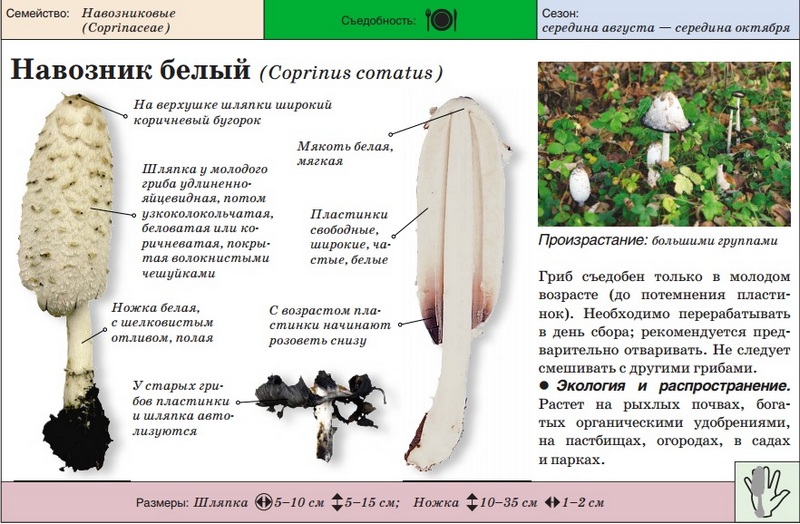
On the territory of Russia it grows everywhere, except for the Far North, and is especially common in the middle lane. Fruits in May to October.
Edible or inedible
Edible mushroom or not, depends not only on the species, but also on age. White and gray coprinuses belong to the fourth category of conditionally edible mushrooms. They should be consumed at a young age when they have bright and clean hats.
At an old age, hats darken and become unusable.Also, when used together with alcoholic beverages, you can get poisoning, because the fungus contains the substance cooprin, which does not allow alcohol to be absorbed by the body and causes severe digestive upset.
Types and their description with photos
The two most popular edible species of coprinus are white and gray. Each of them has its own unique features.
White
The white manure (shaggy) grows in small tufts on well-fertilized soil, vegetable gardens, flower beds, dunghills, humus-saturated areas. The cap's shape resembles a cylinder, which soon resembles a bell of a brown hue. The villous plates are light, later turn pink.
In adulthood, spores blur and stain the plates black. As a result, the bottom edge of the hat blackens. Leg light, up to 15 cm in height and 2 cm in thickness. The pulp is soft with a characteristic mushroom smell.
At a young age, when the plates are bright and clean, the mushroom is considered edible. Once the plates darken, the coprinus becomes unsuitable for food use. You need to cook young fruits immediately after the initial processing.
Gray
Coprinus gray is edible (conditionally edible), but the most unloved mushroom in the villages of Russia, because it causes severe poisoning after drinking. It is popularly called "mother-in-law mushroom." A gray dung beetle settles on humus-laden ground, on stumps and rotting leaves. Often it can be found in city parks and squares.
Coprinuses grow instantly and do not live long. If in the evening they just started to come out of the soil, then in the morning nothing remains of them. Compared with white dung, gray can exist for 2 days, after which it spreads into a black substance.
The hat in diameter reaches 10 cm, ovoid, which later turns into a bell, the edges are ribbed. The color is light, brown and darker in the center. The surface of the cap has flakes. The pulp is white without a pronounced odor, but sweetish in taste.
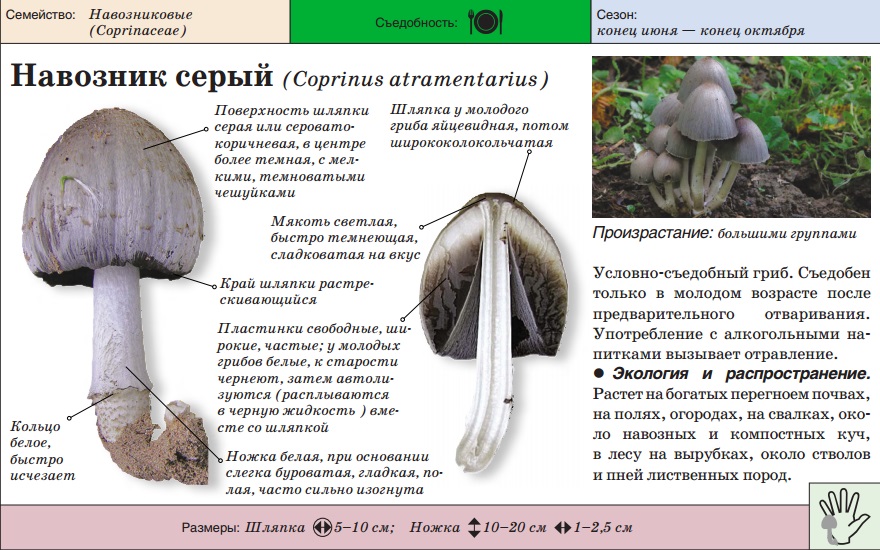
The stalk reaches a height of 20 cm and a diameter of 2 cm. You can find the mushroom along forest roads and around tree stumps with lots of foliage. Grows in numerous groups. Fruits in early April to late autumn.
Collection and application
There are several rules regarding the time of collecting the coprinuses and how to prepare them. But it is important to consider that dung beetles, like other representatives of the mushroom world, have both many beneficial properties and contraindications for use.
How to collect and distinguish from inedible mushrooms
In order to know when it is possible to collect dung beetle, you need to familiarize yourself with its appearance at different stages of ripening. From early May to late October, the fruiting period lasts under suitable conditions.
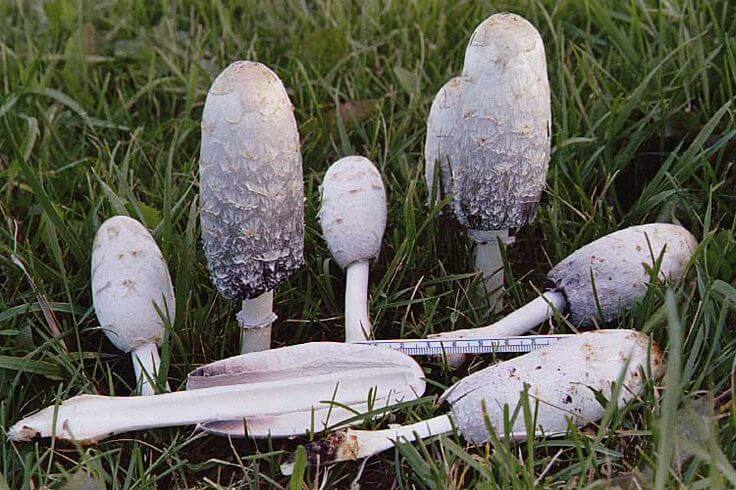
At a young age, a small semicircular formation first appears that resembles a white egg. The mushroom grows quickly enough and after 48 hours it turns into a ball, which in shape resembles a bell with light fragile plates. The leg in rare cases can grow up to 35 cm. The hat can open up to 10 cm in diameter. On a heap with manure, you can often see a tall coprinus with a dense hat and dark scales of light or gray color.
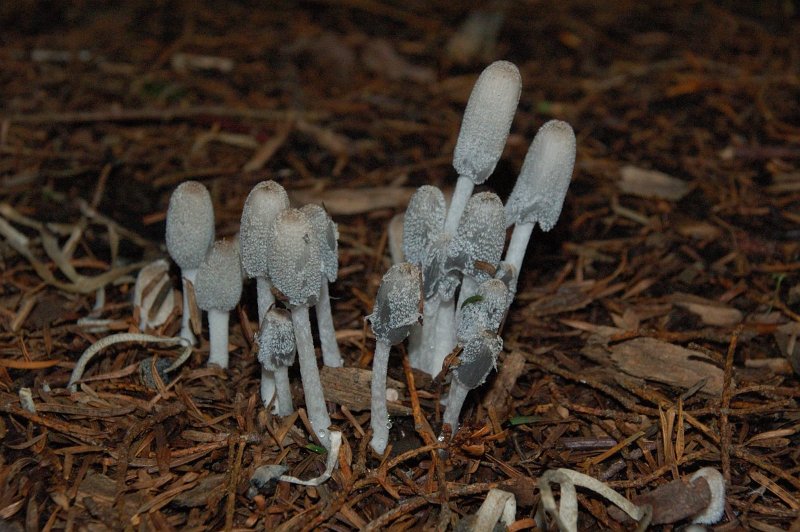
It is during this period that it is necessary to collect mushrooms, while he has bright, clean plates and the hat has not yet turned around. In the following days, the hat unfolds and the plates turn pink. Thus, koprinus shows that it is no longer possible to collect it. After that, the dung beetle blackens and turns into ink.
Useful properties and restrictions for use
The useful properties of dung beetles are due to the high content of:
- vitamins (C, B, D, E);
- essential amino acids, trace elements (iron, phosphorus, zinc, manganese, selenium, calcium, magnesium, copper);
- proteins, fats, as well as antioxidants.
In the composition, as already mentioned, there is a special substance - koprin, which is incompatible with alcoholic beverages. Therefore, in ancient times, dung beetle served as an excellent tool for the treatment of alcoholism.
Recipes and cooking features
Dung beetles should be eaten only after quick processing and only young. After young mushrooms have been collected, they must be urgently processed within the first 2 hours, or they will turn into mucus. They need to be sorted out and the fruits should be left exclusively with light plates, and with pink should be discarded. When processing, it is necessary to remove the film and clean the leg. They are fried, boiled and pickled.
Here are some delicious dishes from these mushrooms:
- You can cook in sour cream, after boiling the mushrooms in salted water for 30 minutes and then stewing in sour cream over low heat. For this recipe, you need to take 300 g of dung beetles, 6 tbsp. l sour cream, 2 onions, 2 tbsp. l sunflower oil, salt and black pepper to taste.
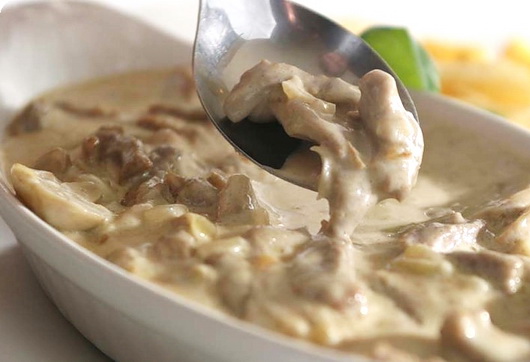
Mushrooms in sour cream First you need to chop the onions finely, and the mushrooms into slices. Onions need to be fried in sunflower oil until golden and then add mushrooms, salt and pepper. You need to fry for 15 minutes, put sour cream and stew on low heat for 5 minutes.
- The dung beet soup is the same as the mushroom soup. To prepare it you will need: 300 g of mushrooms, 100 g of noodles, 3 potatoes, 2 carrots, 1 onion, 50 g of butter, sour cream, salt and black pepper to taste. First you need to pour 1 liter of water into the pan and put on the stove. When the water boils, put the mushrooms.
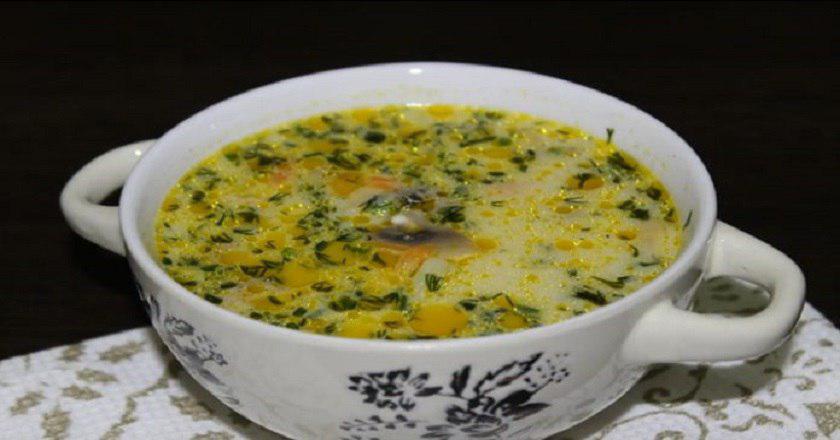
Dung soup Grate carrots on a coarse grater, chop finely the onion. Melt butter in a pan, add onions, carrots and fry for 10 minutes. Next we get the mushrooms and put in a pan to the vegetables. Tom all for 10 minutes. Cut potatoes into cubes. If necessary, you can add boiling water to the broth. Add potatoes and cook for another 10 minutes. Then add all the vegetables and noodles, cook for 5 minutes. Add sour cream, salt, pepper to taste.
Answers to Common Questions
The mushroom dung beetle is edible only after heat treatment; it has its own nuances in storage and preparation. It develops rapidly, for complete maturation a few hours are enough. It is quite rare. You can collect all year round, except for cold periods.

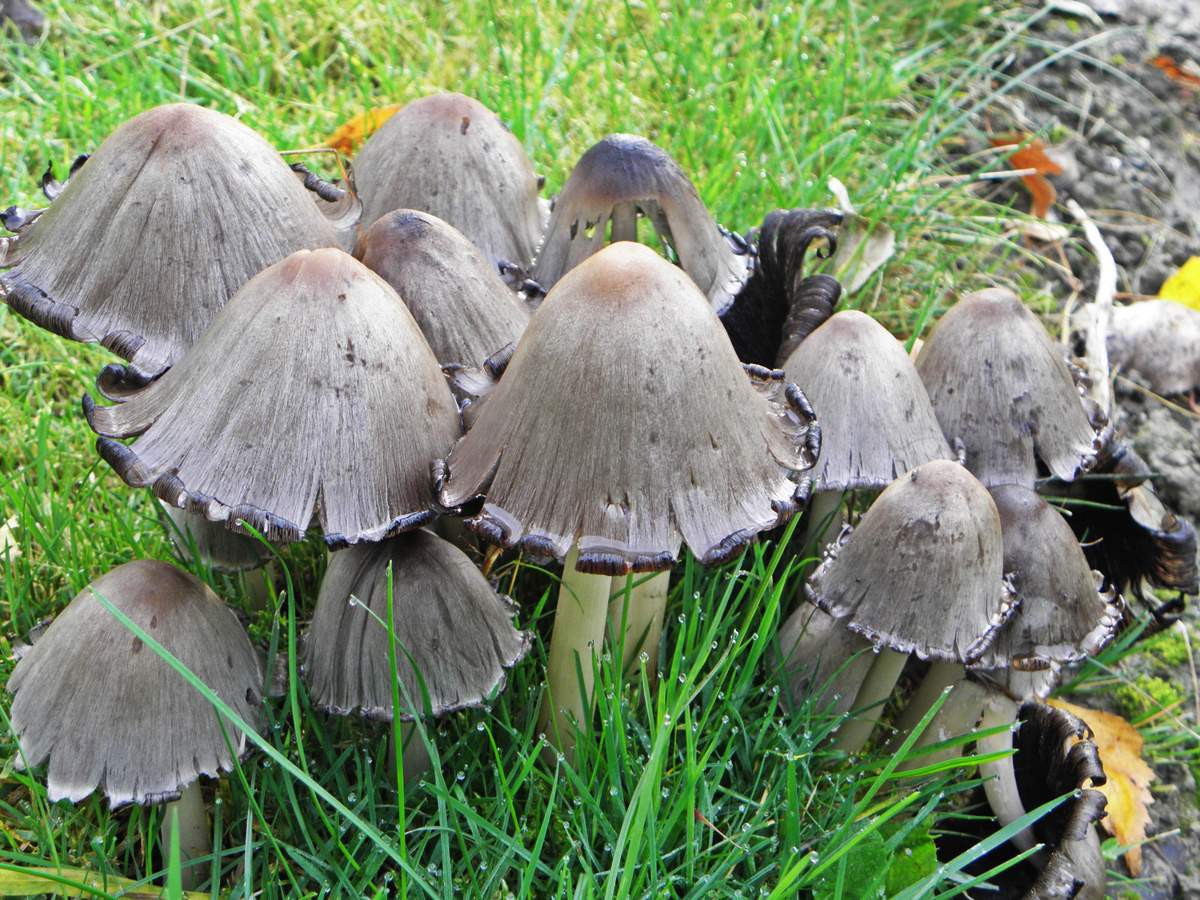
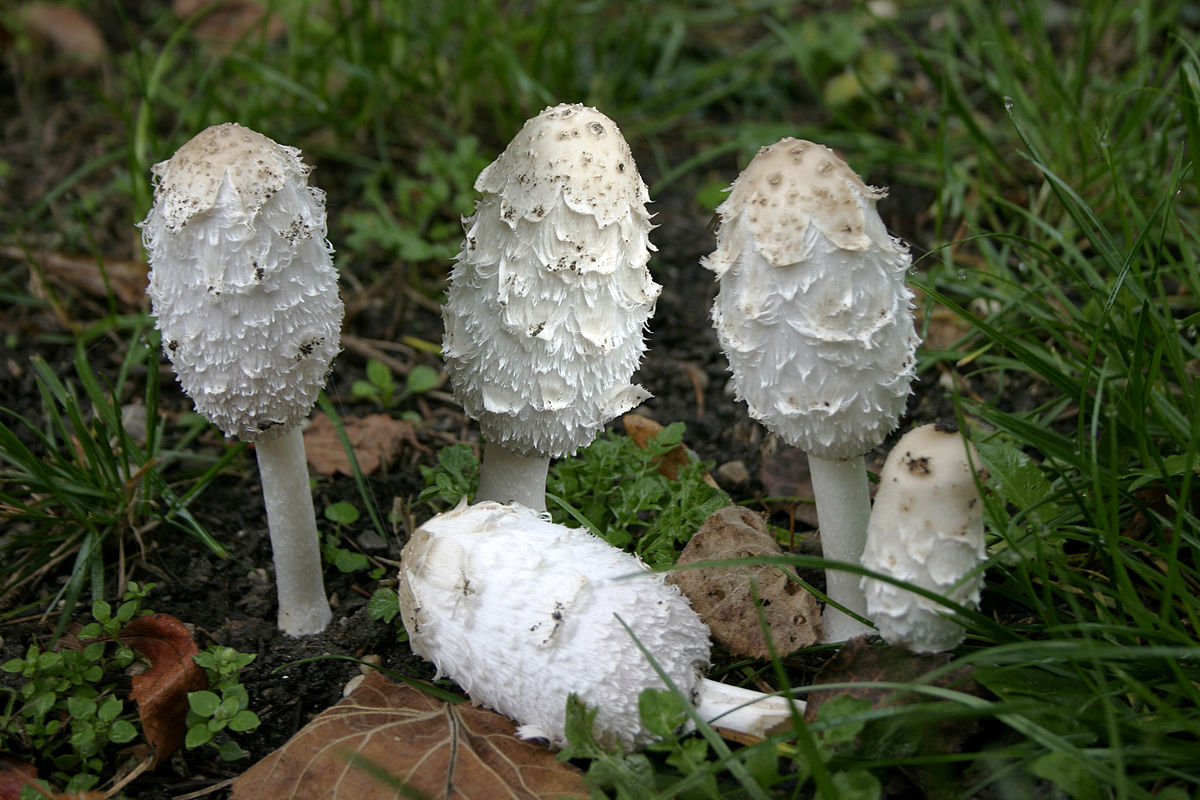
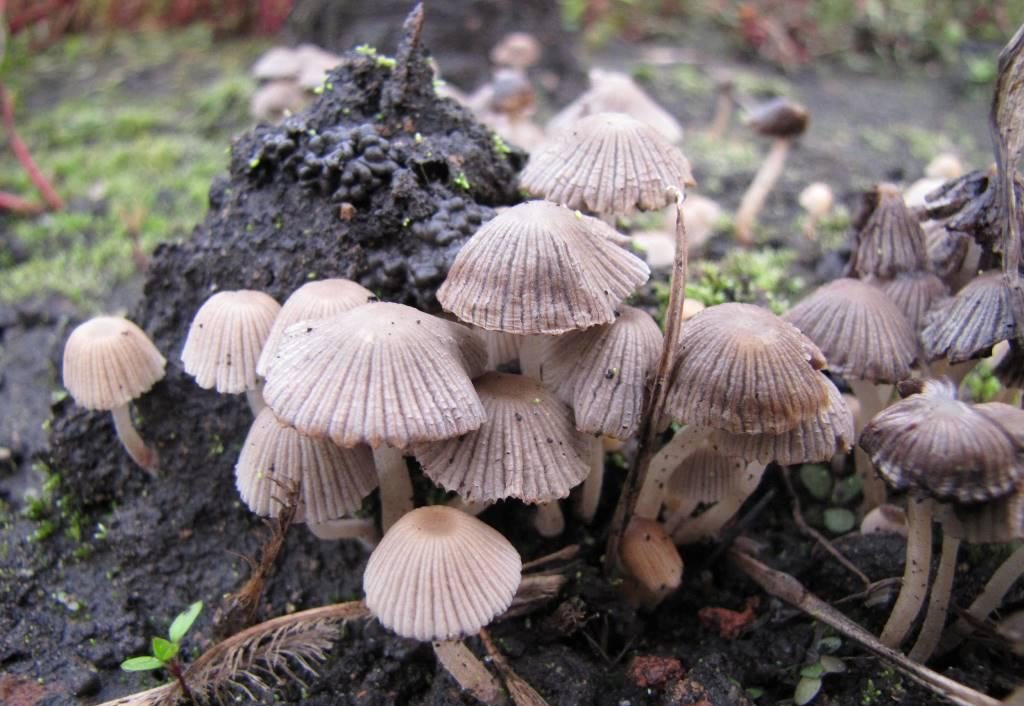
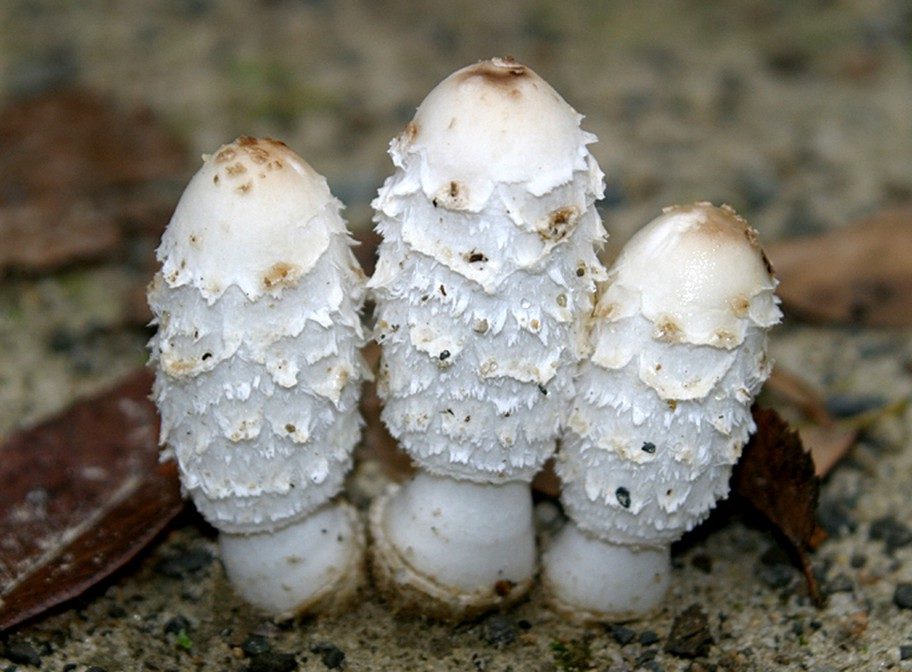
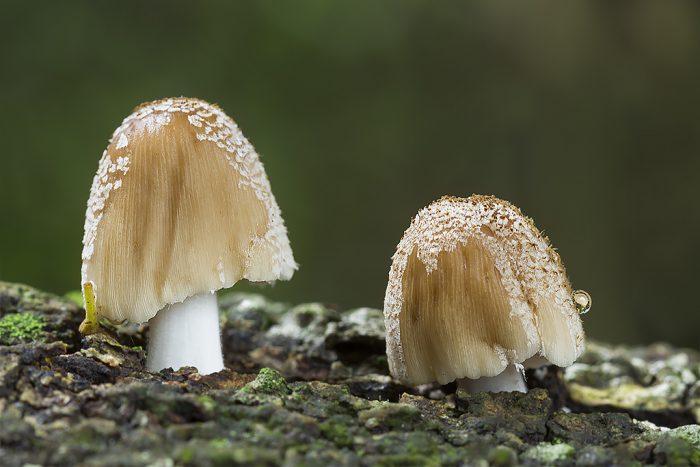
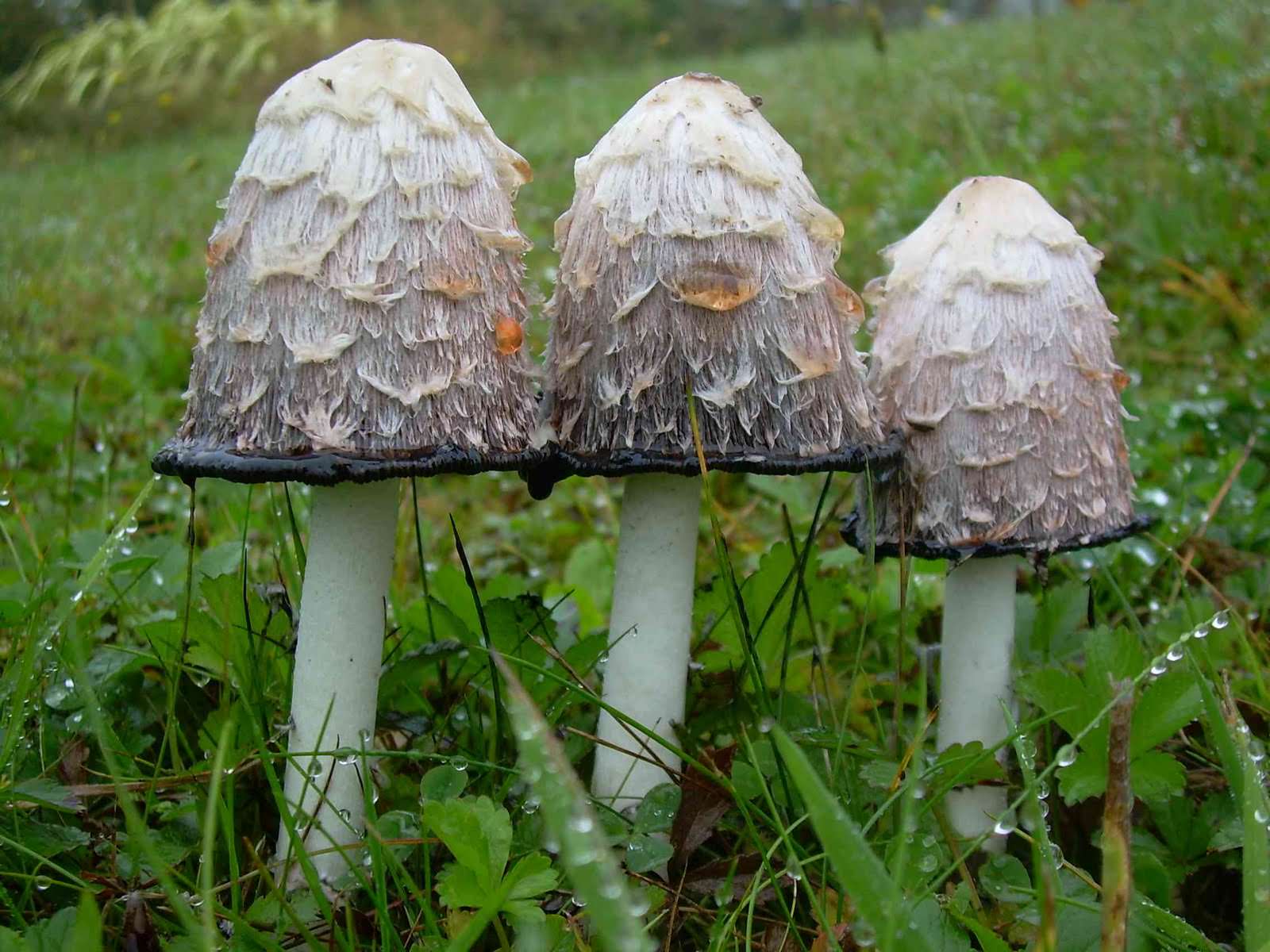
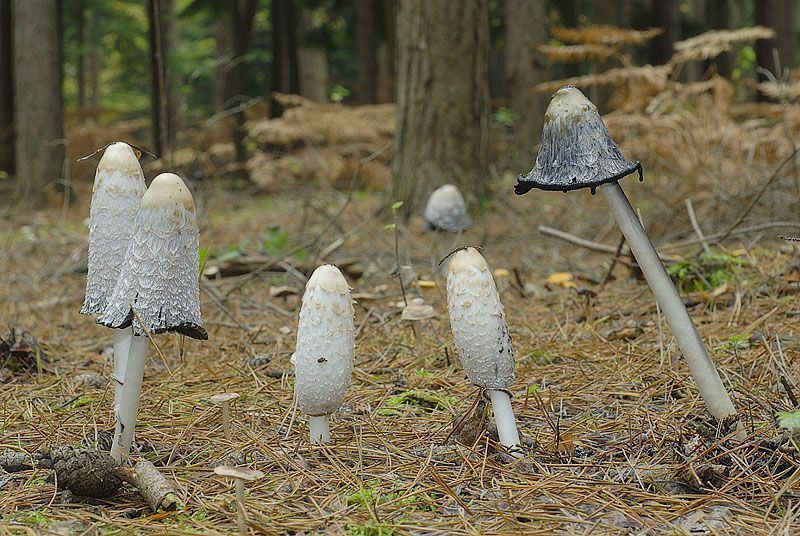
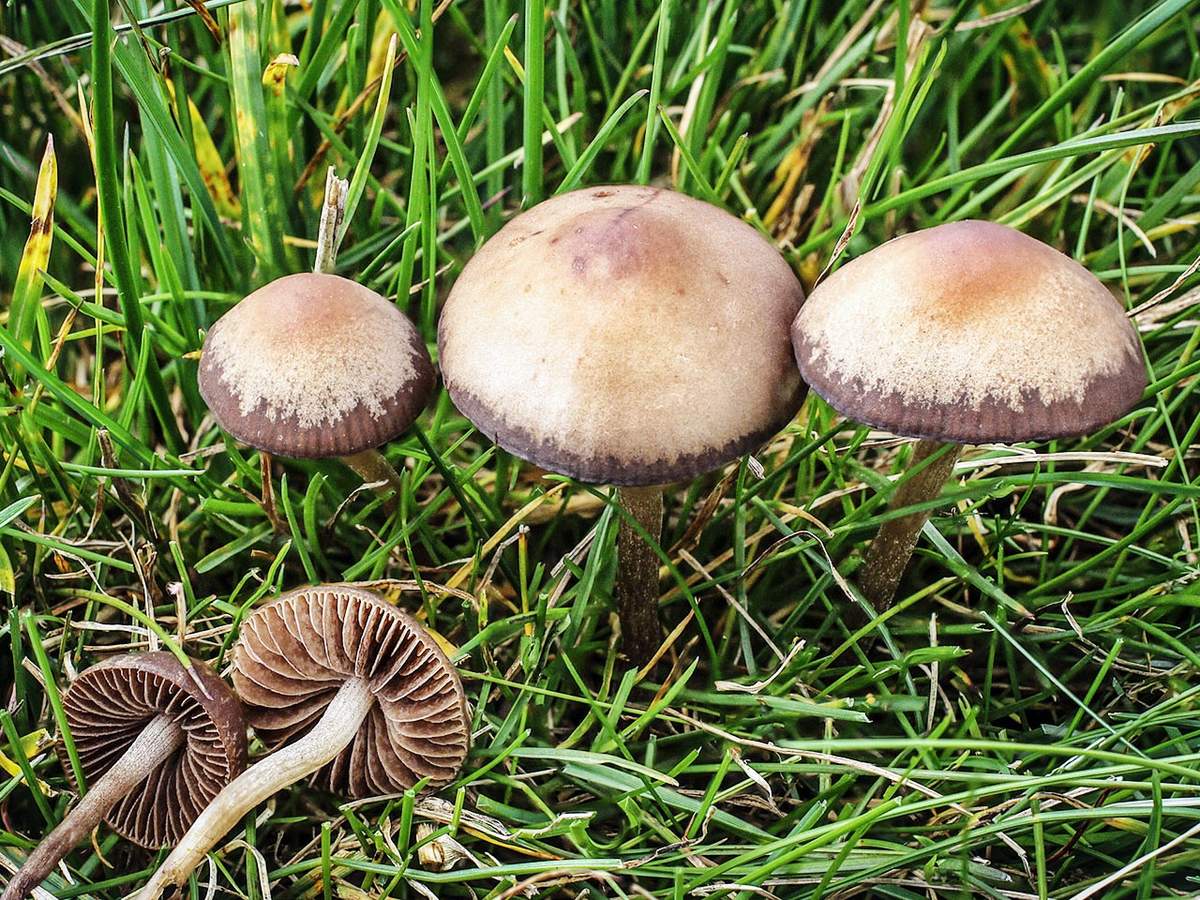
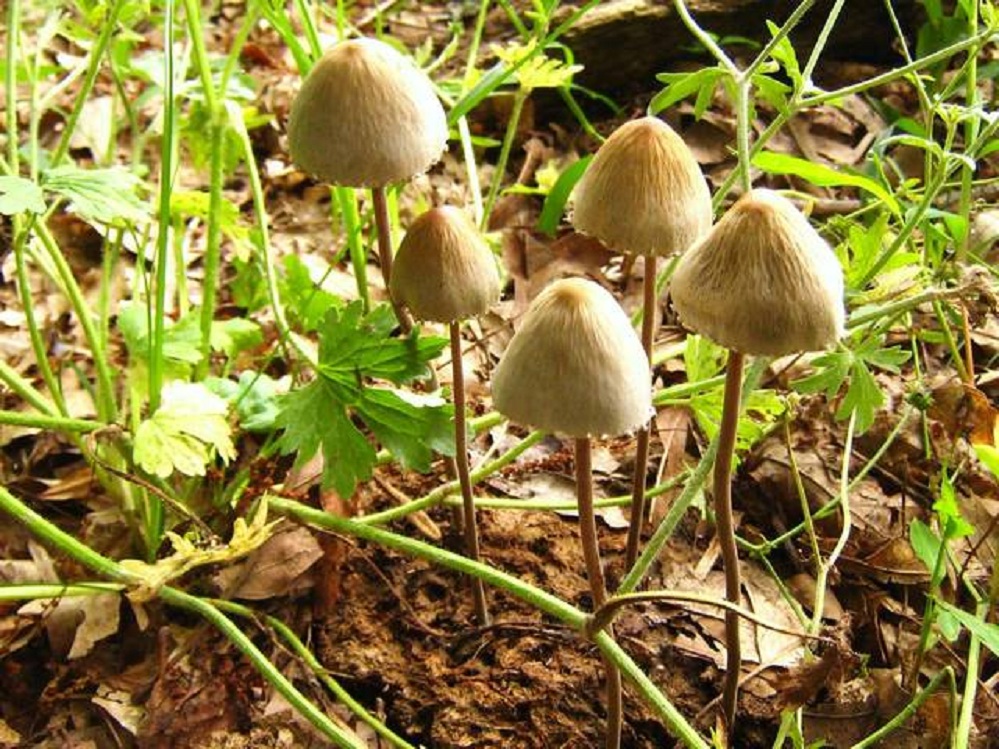
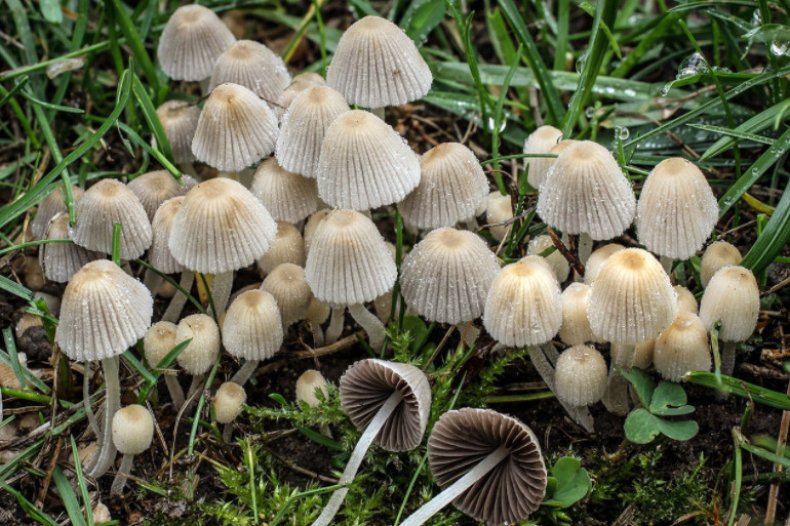
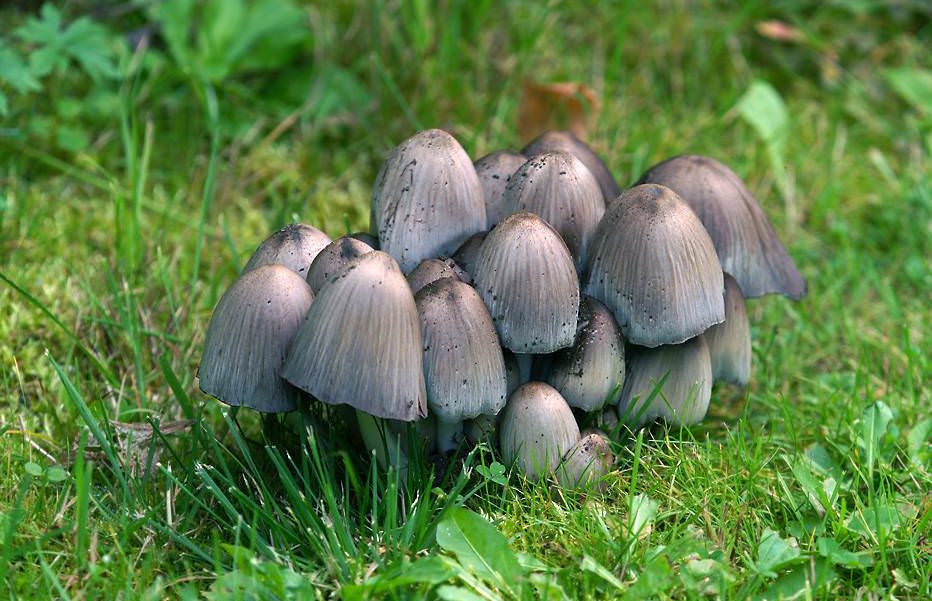
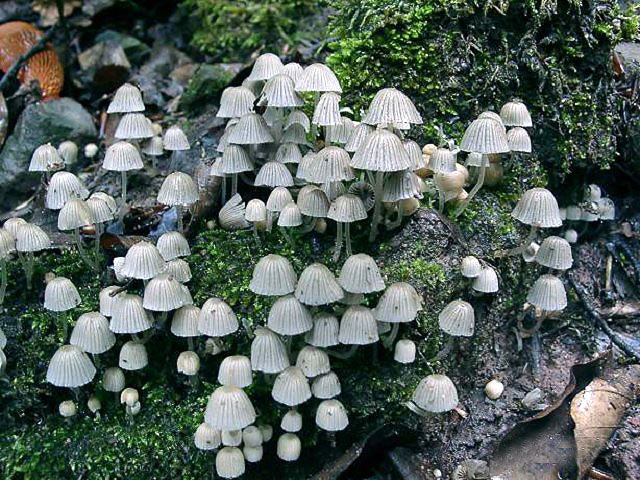
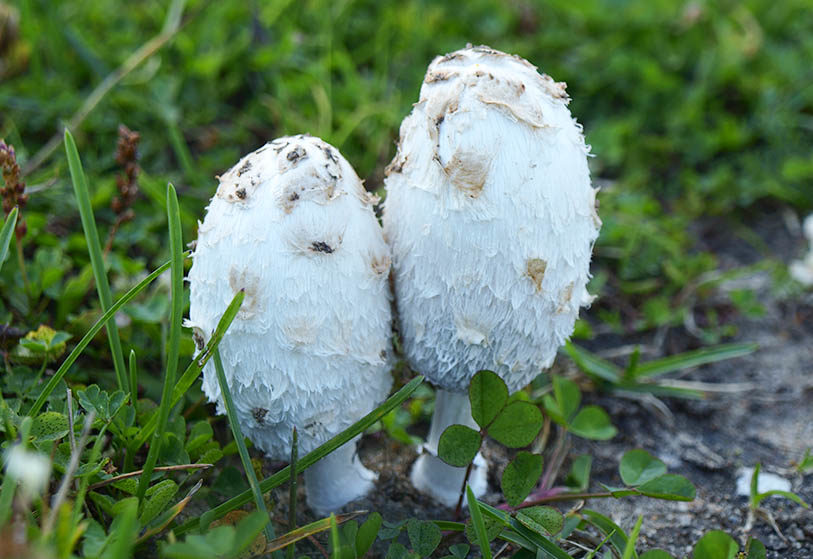

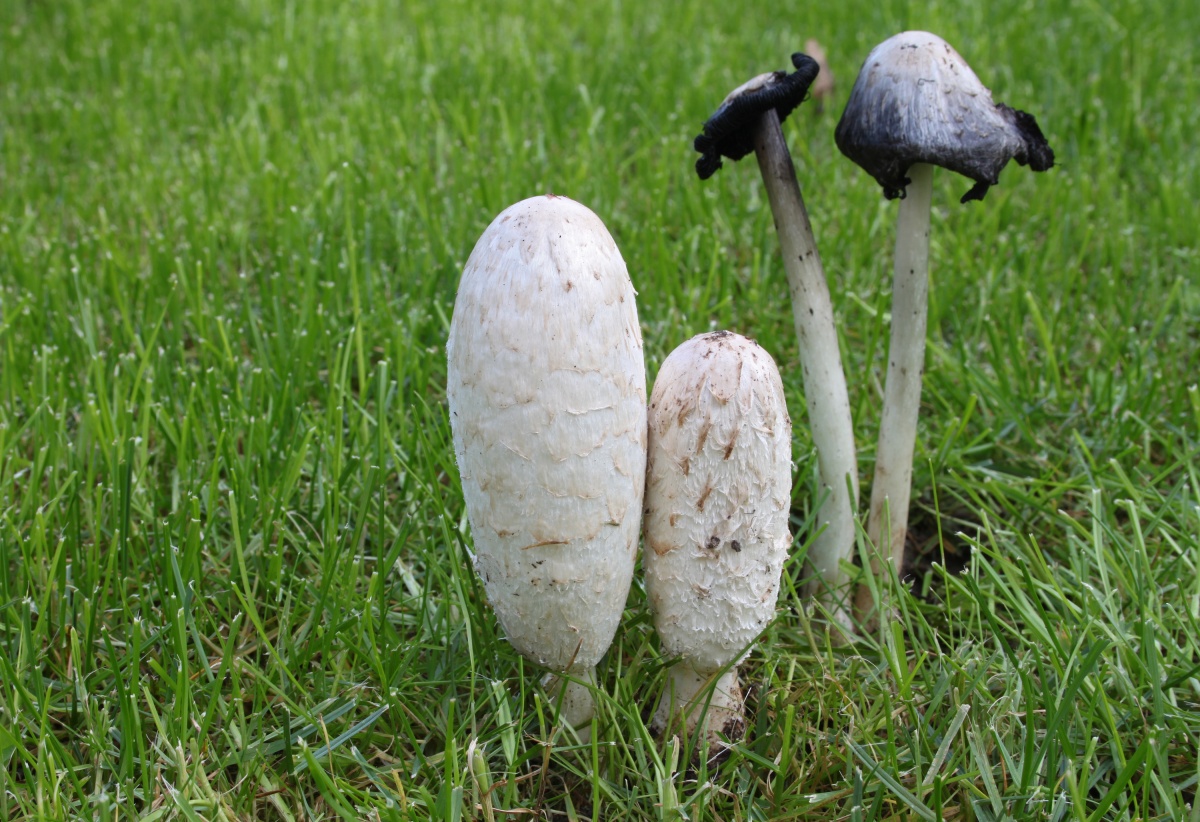



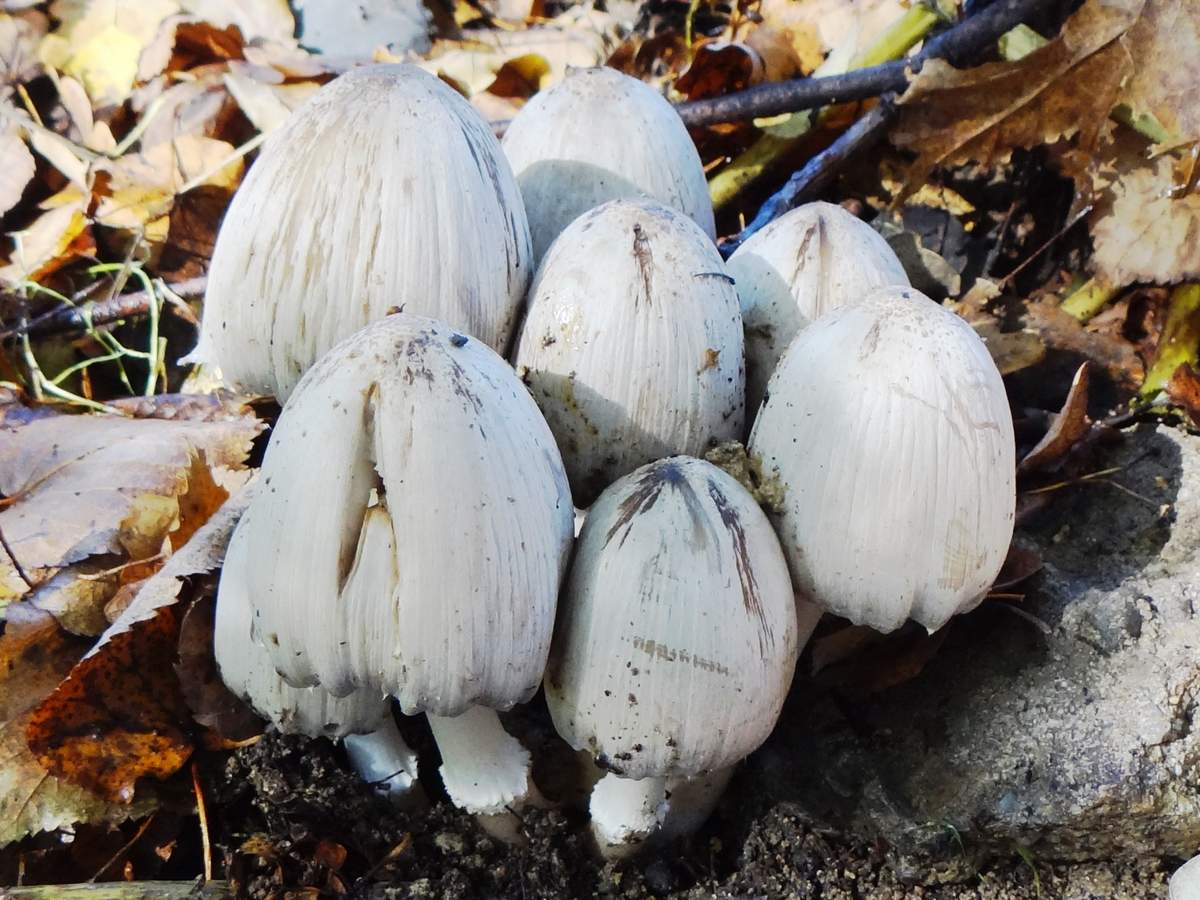
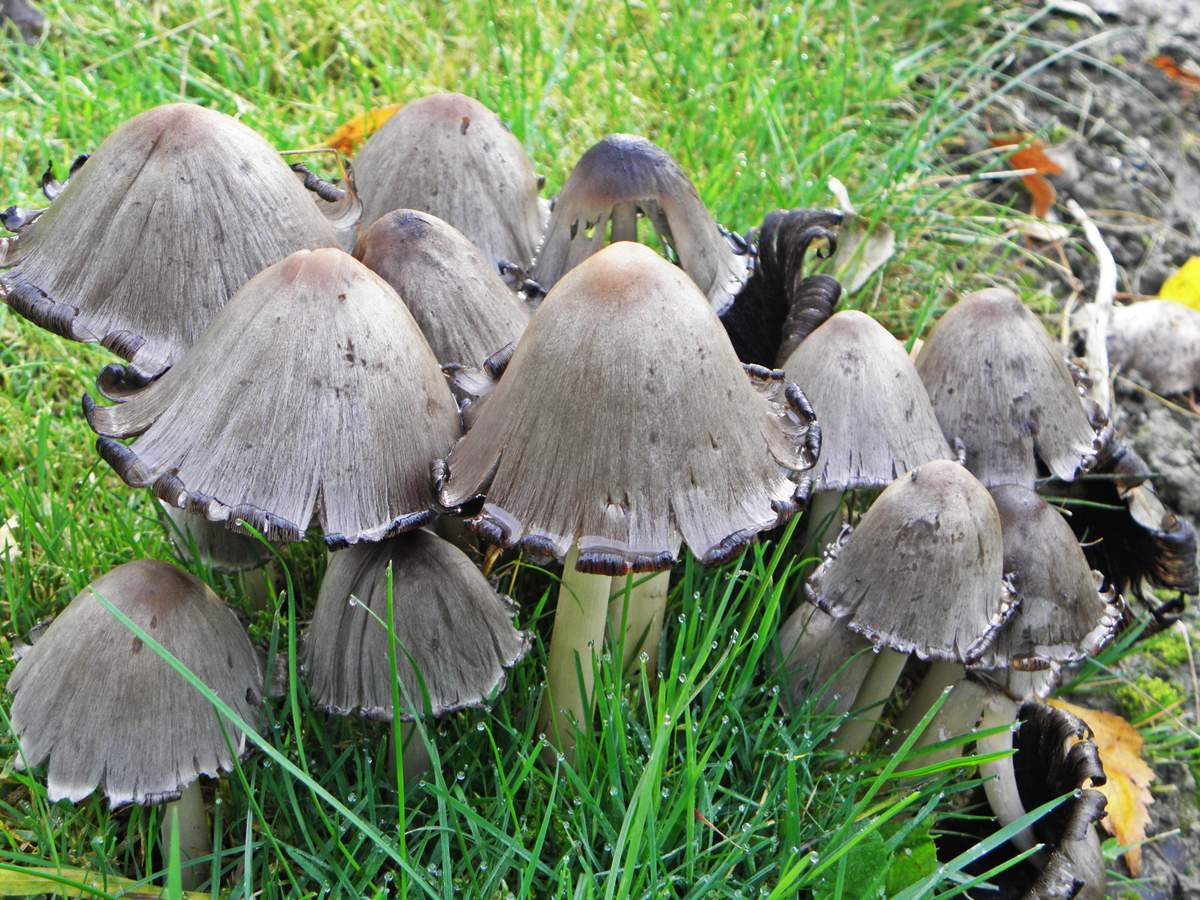
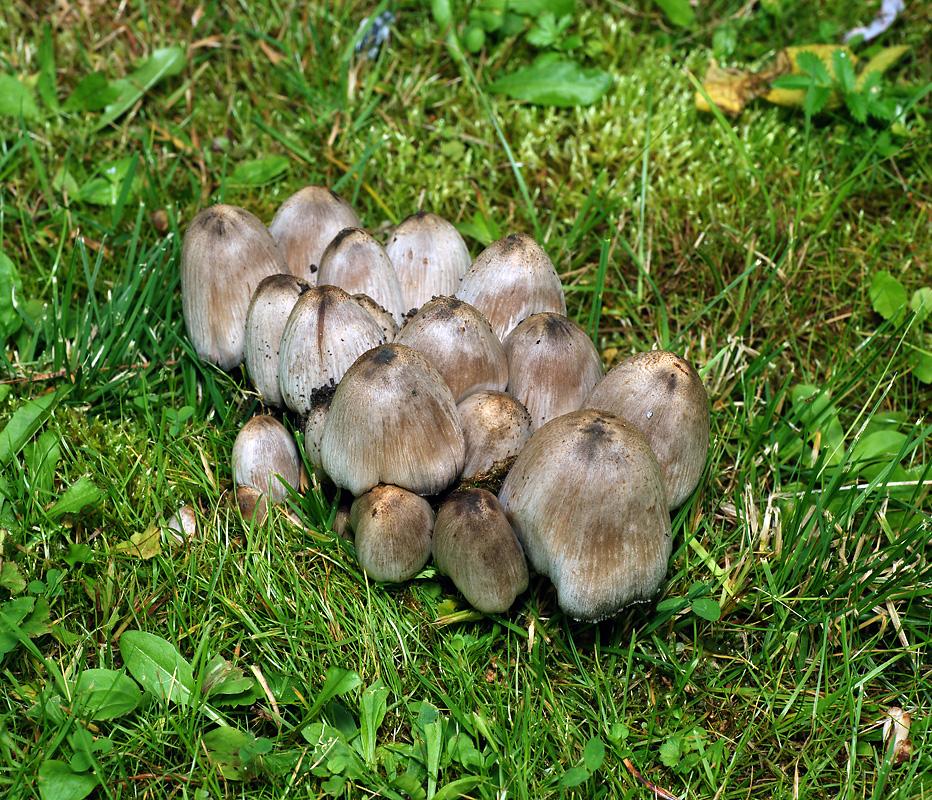
 Care and use of Kombucha at home (+22 photo)
Care and use of Kombucha at home (+22 photo) Edibility of the fungus of the motley umbrella and its description (+19 photo)
Edibility of the fungus of the motley umbrella and its description (+19 photo) Description of edible and inedible oils, their poisonous counterparts (+40 photos)
Description of edible and inedible oils, their poisonous counterparts (+40 photos) Useful properties of milk mushroom and its contraindications (+17 photos)
Useful properties of milk mushroom and its contraindications (+17 photos)